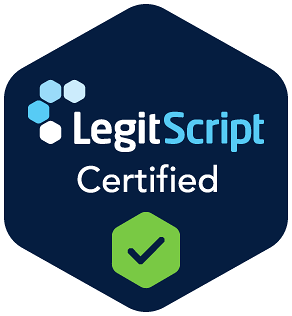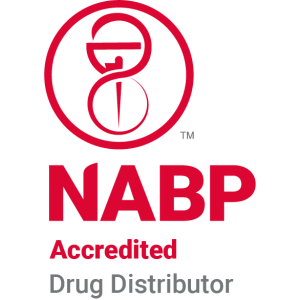How are prior authorizations handled for infusions?

Understanding Prior Authorizations
Prior authorizations (PAs) serve as a gatekeeping mechanism through which health insurance companies assess the necessity of a particular medical service or treatment before approving it for coverage. For infusion therapies, this process plays a crucial role in ensuring treatments are both medically necessary and cost-effective. However, the path to securing prior authorization can be fraught with challenges, delays, and significant administrative burdens. This article sheds light on the intricacies of prior authorizations for infusions, providing insights into the process, challenges, and strategies for effective management.
The Inner Workings of Prior Authorization for Infusions

How does the prior authorization process work?
The prior authorization process is a requirement set by health insurance companies to evaluate the medical necessity and cost-effectiveness of prescribed treatments, tests, and medications before they are administered. Initially, healthcare providers must determine if a specific treatment requires prior authorization based on the patient's insurance policy.
Once confirmed, the provider submits a formal request, including specific treatment codes (CPT codes) and supportive clinical information. This request can take anywhere from one day to a month to be processed. Possible outcomes include approval, denial, or redirection to alternative treatments. If denied, patients may appeal the decision or consider more cost-effective options.
The role of healthcare providers
The responsibility for initiating prior authorization primarily lies with healthcare providers. They typically spend nearly two business days a week on authorization tasks, reflecting the time-consuming nature of the process. Providers submit the necessary documentation to gain approval and must follow up diligently until a resolution is reached.
Insurance evaluation criteria
Insurers evaluate prior authorization requests based on established criteria of medical necessity and coverage policies. Infusion treatments often require extensive documentation to justify the need, leading to complexities in the approval process. Recent regulatory changes aim to streamline submissions, especially for urgent care scenarios, but many physician-administered drugs remain outside these reforms, complicating reimbursement.
Overall, while many requests are ultimately approved, the prior authorization process can significantly impact patient access to timely infusion therapies.
Delegating Responsibilities: Provider's Role in Infusion Authorizations

Who is responsible for getting prior authorization?
The responsibility for obtaining prior authorization typically lies with the healthcare provider. This means the provider must initiate the process by submitting a detailed request to the patient’s insurance provider. The request often includes various treatment codes and justification for the medical necessity of the procedure or medication.
The prior authorization process can be quite complex, especially as different insurers have varying requirements. Providers must navigate this complexity while ensuring that they gather all necessary documentation and meet submission guidelines to avoid delays or denials. Furthermore, the ultimate decision about whether to grant prior authorization is made by a clinician associated with the health plan, not the healthcare provider.
Communication with insurance companies
Effective communication between healthcare providers and insurance companies is crucial. The provider must often engage in a significant amount of back-and-forth correspondence to clarify information or respond to queries during the authorization review. This can create bottlenecks, particularly if further documentation is needed or if there are disputes over medical necessity.
Challenges faced by healthcare providers
Healthcare providers face numerous challenges regarding prior authorizations. They frequently report spending nearly two business days a week on authorization tasks, which can detract from patient care. Delays in processing can lead to extended waiting times for patients to receive necessary treatments, potentially impacting their health outcomes.
Additionally, with an increase in approval requirements — including medications previously exempt from prior authorization — providers encounter unpredictability and frustration, as they must stay up-to-date with the ever-changing insurance requirements. Exploring automation and electronic processes may provide a solution to streamline these burdens and enhance patient care.
What Happens After Authorization Is Granted?
Post-approval process
Once prior authorization is granted, your healthcare provider takes the next steps to submit essential information to your insurance company. The insurer will then evaluate this information to confirm coverage for the prescribed medication or service.
Duration and renewal conditions
The authorization typically remains valid for a specified period, which can vary depending on the insurance plan and treatment type. However, it’s important to note that ongoing treatments may require reauthorization when the initial approval period expires.
Importance of communication post-authorization
Effective communication post-authorization is crucial. Patients can expect feedback from their pharmacist within about two days regarding the coverage decision. If a request is denied, your provider can submit additional documentation to strengthen the appeal, emphasizing the medical necessity of the treatment. Patients may also opt to begin the treatment immediately, covering costs upfront while waiting for authorization responses.
Challenges and Complexities in Infusion Therapy Authorizations
What are the challenges and complexities of prior authorizations for infusion treatments?
Prior authorizations for infusion treatments present several significant challenges. The process is heavily burdened by complex administrative requirements, demanding comprehensive documentation that demonstrates medical necessity. Healthcare providers must navigate these complications to secure necessary approvals, which is not a straightforward task.
Delays are a common issue, often leading to prolonged wait times for patients. Research indicates that when requests are denied, patients face a median treatment delay of 50 days. These delays are concerning as they can result in increased glucocorticoid exposure due to postponements in initiating treatment, raising the risk of related side effects.
Moreover, a staggering 91% of infusion providers report negative impacts on patient care due to the arduous authorization process. Infusion centers frequently deal with high volumes of prior authorizations and depend greatly on data from referring physicians, complicating the workflow and further delaying treatment.
The landscape is also constantly evolving. Payer requirements change, leading to added layers of complexity around treatment settings and medication formularies. These factors necessitate that healthcare teams remain agile to ensure they can effectively advocate for timely patient care despite the systemic barriers they face.
Additionally, the administrative efforts needed to track and manage these authorizations can strain already thin resources, contributing to burnout among healthcare staff and ultimately affecting the quality of care delivered to patients.
Strategies for Effective Management of Prior Authorizations

How can healthcare providers manage the prior authorization process effectively?
Healthcare providers can manage the prior authorization process effectively by adopting a multifaceted approach. Below are some strategies that can help streamline the process:
- Mindful Prescribing : Aim to prescribe safer, cheaper, and evidence-based alternatives wherever possible. This can minimize the need for prior authorizations.
- Streamline Workflows : Utilize electronic health records (EHRs) to enhance workflow efficiency. Designating specific staff to handle authorizations can boost familiarity with payer requirements and improve processing times.
- Leverage Technology : Implement online payer portals and automation tools to reduce the administrative burdens associated with prior authorizations. Studies show that electronic processes can cut the time spent on these tasks by up to 50%.
- Communication with Payers : Maintain open lines of communication with insurance companies. Document denial reasons thoroughly and advocate for prompt processing through regular follow-ups. When necessary, be prepared to appeal denied requests to secure timely approvals.
Regular updates to both providers and patients during the authorization submission process can foster transparency and improve overall satisfaction as patients navigate these intricacies.
Tools and Solutions for Overcoming Authorization Hurdles

What tools can assist in navigating prior authorization approvals and dealing with denials?
Navigating the complex world of prior authorizations can be daunting for both providers and patients. However, several tools and strategies can help streamline this process and alleviate the frustrations associated with authorization approvals and denials.
-
Specialized Software Solutions :
Various automated systems can assist in submitting prior authorization requests more efficiently. They enable healthcare providers to track the status of requests in real-time, reducing the time spent on authorization tasks. -
Real-Time Benefit Verification (RTBV) :
These tools are instrumental in providing immediate insights into insurance coverage for medications and treatments before they are administered, helping to avoid unexpected denials. -
Integration of Electronic Health Records (EHR) :
Connecting EHR with prior authorization systems minimizes manual errors, ensuring that the necessary documentation for treatment justification is submitted appropriately. -
Standard Operating Procedures (SOPs) :
Establishing clear SOPs within the practice, along with designated roles, enhances overall efficiency in managing prior authorizations. -
Tracking Vital Performance Indicators (VPIs) :
Monitoring performance can identify bottlenecks, as statistics indicate that nearly 82% of denials are eventually overturned due to administrative errors. This insight can help inform necessary changes to improve processes. -
Patient Education :
Informing patients about the prior authorization process can reduce frustrations and increase their engagement, empowering them to understand potential delays and the rationale behind them.
Together, these strategies can help organizations navigate the intricate prior authorization landscape more effectively.
Impacts of Terminology and Regulatory Changes on Infusion PAs

How do terminology and regulations impact prior authorizations for infusions?
Terminology and regulations are crucial in shaping the prior authorization (PA) process for infusions, dictating the protocols healthcare providers must adhere to in order to gain approval for necessary treatments. Recent regulatory updates have focused on streamlining PAs, particularly for government health plans. This includes mandates for electronic submissions and established response time limits, which are intended to enhance patient access to timely care.
Despite these advancements, significant gaps persist, especially concerning physician-administered drugs typically utilized in infusion therapy. These outdated regulations leave infusion providers challenged, resulting in common delays that can extend treatment waiting periods by an average of 31 days. Such delays not only impede patient outcomes but also add to the substantial administrative burdens faced by healthcare staff, who may spend nearly two business days a week managing these authorizations.
Although around 96% of PA requests are eventually approved, the time and effort spent to secure these approvals can disrupt access to essential treatments. Thus, the terminological frameworks and regulatory structures governing infusion PAs significantly influence both the efficiency and effectiveness of patient care in this area.
Towards a Streamlined and Efficient Process
While prior authorizations serve an essential purpose in controlling healthcare costs and ensuring appropriate care, the process can be daunting, especially for infusion services. The complexity of obtaining PAs for infusions often leads to delays and administrative burdens that can adversely affect patient outcomes. By understanding the intricate details of this process and employing effective strategies and tools, healthcare providers can mitigate delays, reduce denials, and enhance patient care. Embracing automation, maintaining open communication with insurance carriers, and leveraging regulatory changes can collectively result in a more streamlined and effective approach to managing prior authorizations for infusion therapies.
References
- Your Ultimate Cheat Sheet To Prior Authorization - Local Infusion
- The Ultimate Guide to Prior Authorization - Myndshft
- Prior Authorization Updates For Infusion Providers - WeInfuse
- Unifying Prior Authorization Data: Unique Challenges and ...
- Treatment Delays Associated with Prior Authorization for Infusible ...
- Prior authorization: What is it, when might you need ... - Harvard Health
- Prior Authorization Department - Prime Infusions
- Prior Authorization – What is It? - TRS













